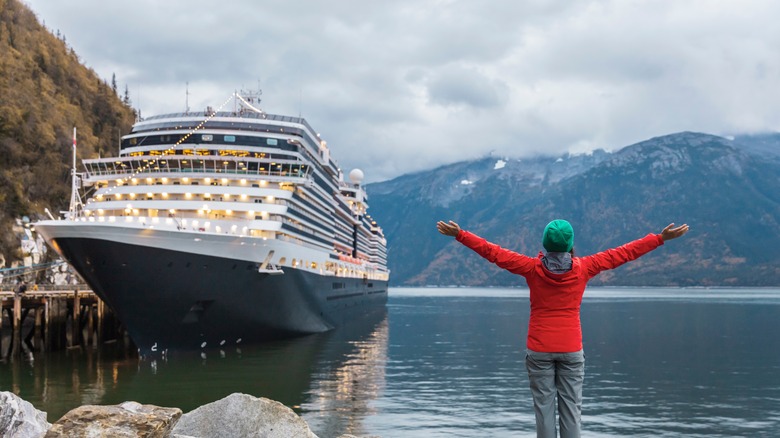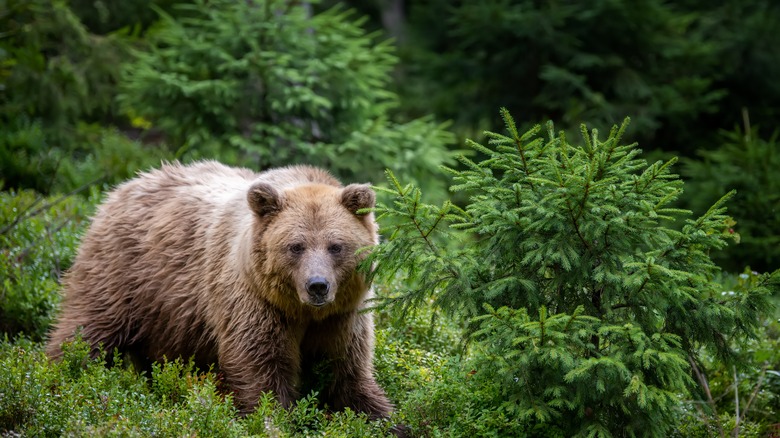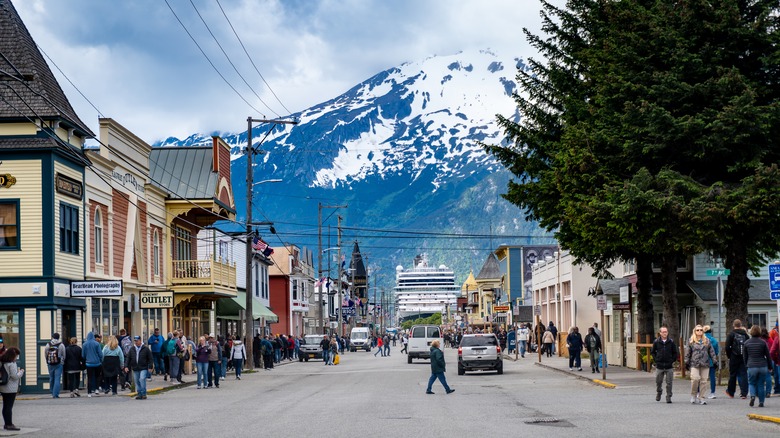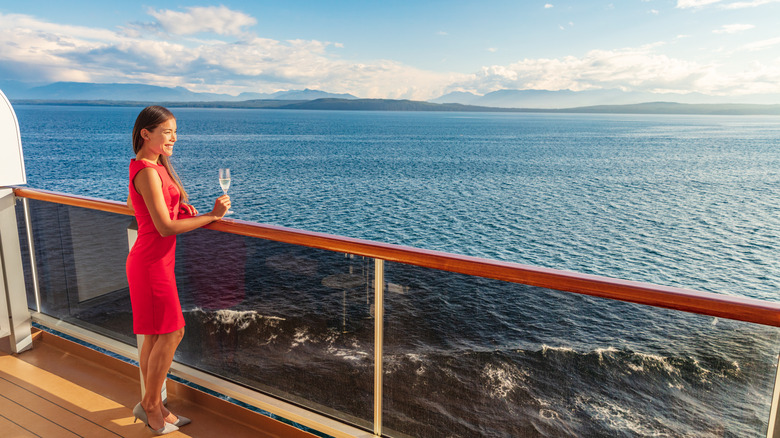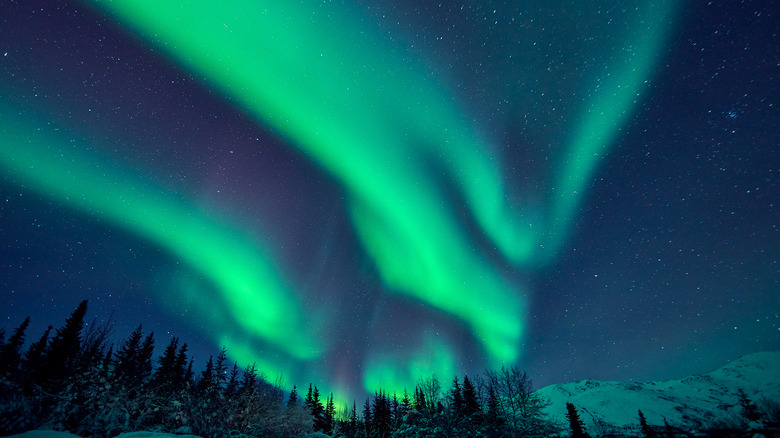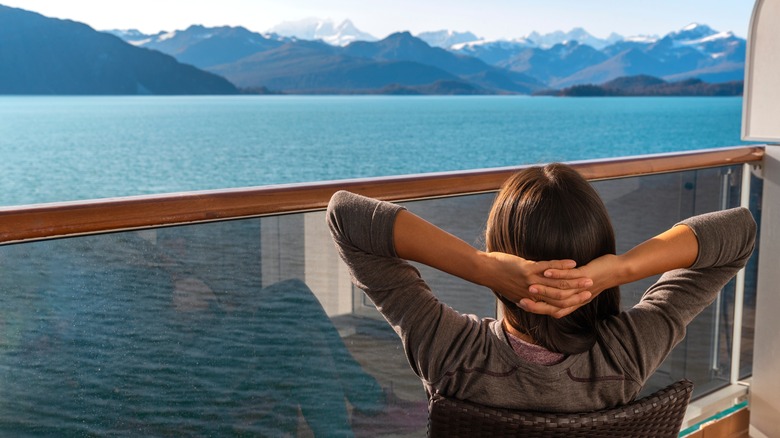The Best Time To Go On An Alaskan Cruise, Depending On What You Want Most From The Trip
Wondering when to book your Alaskan cruise? A trip to the northernmost state is delightful at any time of year, but deciding on what you most want out of the vacation can help determine when the best time to book your sailing will be. To start, the seasonal nature of cruises will help you out: The bulk of cruises to Alaska operate from May to September from the West Coast ports of Seattle and Vancouver. So while there are fantastic Alaskan cruises to choose, maybe don't count on ringing in the New Year on one.
As a travel writer, one of my most treasured trips is the Inner Passage cruise to Alaska I took with my kids on the Discovery Princess. Much of what we enjoyed onboard, including the ritzy dining experiences, getting bundled up to watch outdoor movies under a vast canopy of stars, and snapping roughly one billion pictures from our balcony, would be part of the experience no matter when we traveled. On the other hand, some of the most delightful aspects of the trip, like the temperate weather, the drama of calving glaciers and resulting baby icebergs, and the spawning salmon we watched launch themselves upstream, were down to the fact that we traveled as July turned to August.
Wildlife Spotting
One of the top draws of an Alaskan cruise is the opportunity for wildlife spotting, which hits its stride in the late spring and continues through the summer, before the animals tuck in to hibernate or head south for the winter. Bears, caribou, and eagles are just some of the animals that make their homes in the wildlands of Alaska, with seals, porpoises, and several species of whales splashing offshore. While orcas spend the year in Alaska, grey and humpback whales winter in warmer climates, returning north in the spring (late April/early May, according to the Travel Alaska site.)
During our summer adventure, we spotted countless bald and golden eagles swooping through the sky and perched on tree branches and telephone poles. On a whale watching expedition, we were treated to views of the giant creatures breeching the surface and diving back into the depths while sea lions sunned themselves on the shore. Near the Mendenhall Glacier, we even spotted a bear. Wildlife safaris, nature walks, and whale-watching tours are often options for excursions. Make sure to book well in advance if creature-spotting is high on the list for your trip.
Battling fewer crowds
Traveling when school is in session in the spring and fall is your best bet for avoiding crowds, particularly if you are sailing with a family-focused cruise line. Many people don't have a lot of flexibility on when they can travel, so if you do, take advantage! Cruise companies work hard to have ships sail at full capacity for every sailing, so the amount of people onboard might not be noticeably different no matter when you go. When you go ashore, however, the sparse shoulder season crowds will be a bonus. Fewer ships sail on fewer itineraries outside of peak season, so you won't have as many people to contend with. People dream of being alone in the wilds of Alaska. Part of the allure is the wide-open, untamed space ... seeing it without several hundred other people, give or take, seems like a good idea.
Of course, there are drawbacks to traveling to Alaska in the shoulder season. Tripadvisor user Maple_Marshmallows calls the end of April "the worst time to visit," citing spring break. It's also important to remember that some of the seasonal attractions and businesses might not be open if you travel too early or late during the cruise season.
Basking in warmer weather
Alaska is warmest in July. However, if you are booking your trip with visions of endless hours of sun-baked fun poolside, you may need to do some revision to your fantasy. Particularly along the popular Inside Passage cruise route, Alaska has a temperate climate that doesn't feel very different from the Pacific Northwest. In the region of Juneau, Skagway, Sitka, and Ketchikan, July averages a high of 64 degrees Fahrenheit and lows of 48, with 17 rainy days, according to Alaska.org. August is similar, only a few degrees cooler.
If you are doing an inland excursion or tour into places like Denali National Park, Anchorage, Seward, or Fairbanks, know that things aren't radically different, though it is slightly warmer. This region, known as the Interior or Southcentral area, averages July temperature highs of 65 degrees Fahrenheit and lows of 51.
A wardrobe that would feel comfortable for Oregon weather won't be very out of place for a summer sailing in Alaska. That said, in the height of summer, you may get some unexpectedly warm days, so make sure you leave a bit of room in your suitcase for shorts and a tank top!
Getting dazzled by the Northern Lights
The aurora borealis are more active and easier to spot during long winter nights. Travel Alaska pegs the season as August 21-April 21, so if you want a better chance to see the sweeping light show during the summer, booking your trip for as late in the sailing season as possible is your best bet.
The dancing greens and blues (and purple and red if you are really lucky) are caused by solar wind interacting with the Earth's magnetic field. Space.com explains: "As Earth's magnetic field redirects the particles toward the poles ... the dramatic process transforms into a cinematic atmospheric phenomenon that dazzles and fascinates scientists and skywatchers alike."
Alaska is one of the best places in the world to see the Northern Lights. The bad news is that in the rainforest atmosphere of the Inside Passage, where most cruises go, it tends to be cloudy and rainy during the months when the aurora is most active. That doesn't mean they are impossible to spot, but if you have an itinerary that takes you farther north, or are part of a land tour that takes you farther inland, your chances of catching a glimpse of the dazzling phenomenon increase substantially.
Keeping more money in your wallet
A trip to Alaska isn't a cheap prospect. Most visitors to the state come for the experience rather than to save money on a bargain vacation. That said, you can save quite a bit by choosing your trip dates wisely. According to Cruise Critic, the lowest average prices are in September and October, followed by prices in May. It goes to reason that the end of season months are cheaper: The weather is starting to turn, kids are back in school, and demand is less. You might be surprised that April is more expensive than May, despite the fact May is arguably a better month to travel to Alaska. Cruise Critic gives the reason for this seemingly illogical quirk — not surprisingly, it's economics. April is a transitory month in the cruise industry, with ships repositioning from their winter ports in the south to their summer ports. Not as many cruise lines run Alaska cruises in April as they do in May, meaning there are fewer cabins available, which keeps prices higher than you might expect.
